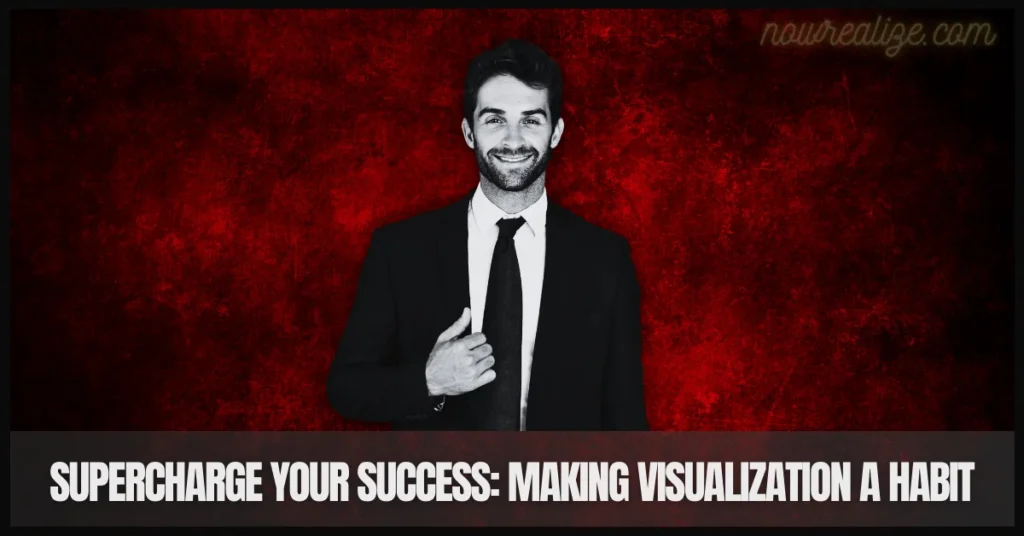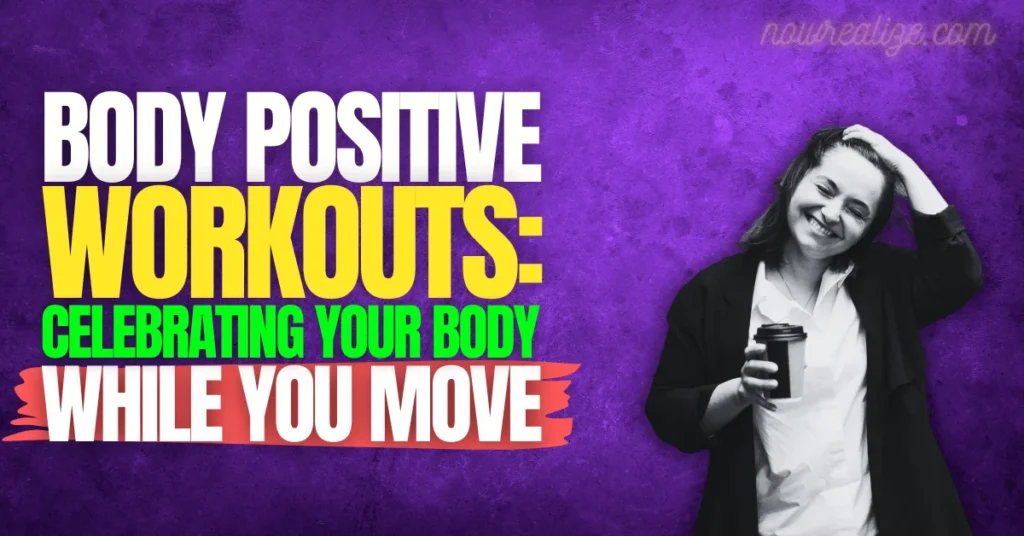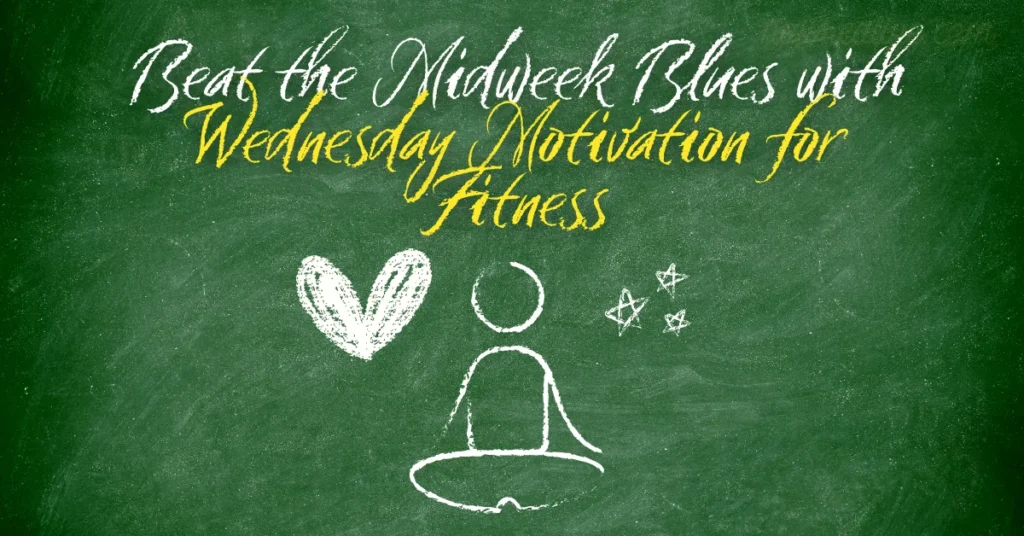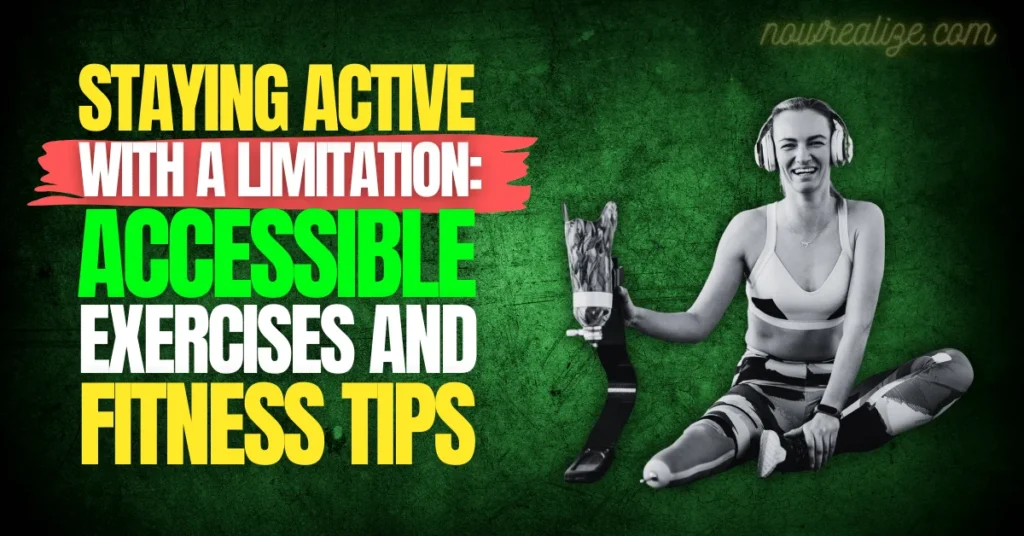
Table of Contents
Imagine this: Sarah, who was previously nervous by the gym, is now a weightlifting champion. But her path included more than simply physical fitness. Sarah found the secret weapon of elite athletes: visualizing. Believe it or not, research indicates that imagining achievement can be just as efficient as physical exercise!
So, how can you use the power of your mind to attain your fitness goals? Buckle up, because we’re about to show you how to see yourself succeed and improve your routines.
Science Says Seeing is Believing

Science is revealing the amazing potential of our minds. When we visualize ourselves acting, the same brain circuits activate as if we were doing it. This effect, known as mental rehearsal, enhances the mind-muscle connection, resulting in higher performance and faster advancement in the real world.
Here’s a deeper dive into how visualizing may improve your fitness journey:
From the Science Lab to the Gym: How Visualization Works
- Neurons That Fire Together, Wire Together: When you picture an activity, your brain generates a blueprint. The neurons that would normally activate during physical activity light up, strengthening the connections between them. This improved communication between the brain and muscles results in smoother, more efficient motions.
- Building Muscle Memory Through Mental Reps: Consider visualization to be a form of mental exercise. Repeatedly practicing a movement in your brain helps to instill good form and technique. This mental preparation leads to improved coordination and control when performing the exercise physically.
- Boosting Confidence and Motivation: Visualizing success might boost your confidence in your talents. Seeing yourself achieve your goals encourages a can-do attitude and encourages you to persevere through difficult workouts.
Beyond Science: Real-World Benefits of Visualization for Fitness
- Enhanced Focus and Concentration: Visualization helps you avoid distractions and focus on the exact motions you’re going to accomplish. This laser focus leads to improved form and a more effective workout.
- Overcoming Challenges and Self-Doubt: Visualize yourself completing a challenging activity or breaking through a plateau. This mental rehearsal provides you with the tools you need to face challenges head-on and silence those inner voices of doubt.
- Injury Prevention: Visualization can help you improve your form and technique, lowering the risk of injury. Mentally rehearsing precise movement patterns prepares your body for safe and efficient training.
From the Mind to the Muscle: Crafting Your Visualization

We’ve looked into the science of visualizing and its benefits for fitness. Now it’s time to put that information into action! Here’s how to create a visualization program that helps you achieve your fitness goals:
1. Set the Scene: Immerse Yourself in the Workout Environment
- Close your eyes and take a deep breath. Allow yourself to completely relax and empty your mind.
- Transport yourself to your workout environment. Is it your home gym, a busy fitness center, or a peaceful outdoor area? Experience the familiar sights, smells, and sounds in realistic clarity.
- Focus on your physical state. Feel invigorated and prepared to tackle your workout. Imagine your body being strong, flexible, and coordinated.
2. Engage All the Senses: A Multisensory Experience for Maximum Impact
Visualization extends beyond simply watching oneself complete the exercise. Here’s how to design a fully immersive experience:
- Sight: Visualize yourself performing the exercise in perfect form. Imagine yourself lifting weights with flawless control or running with powerful strides.
- Sound: Incorporate noises linked with your workout. Hear the rhythmic clinking of weights, the hammering of your feet on the concrete, or your deliberate breathing.
- Touch: Feel the weight of the equipment in your hands, the heat in your muscles as they contract, and the firm grip of your shoes on the ground.
- Smell: Does your gym have a distinct scent? Maybe it’s the fresh air outside or the energizing scent of eucalyptus oil. Use your sense of smell to create a full sensory experience.
- Taste: This may appear odd, but consider the slight sweetness of perspiration as you push yourself, or the pleasant taste of water after a strenuous workout.
By activating all of your senses, you generate a powerful and realistic mental experience that reinforces the mind-muscle link.
3. Conquer Obstacles: Visualize Yourself Overcoming Challenges
- Anticipate potential hurdles. Is there an exercise that you find difficult? Perhaps you have difficulty maintaining perfect form during lunges or engaging your core during planks.
- Visualize yourself overcoming these challenges. Imagine yourself performing the exercise with flawless technique, pushing through the discomfort, and emerging stronger.
- Focus on your mental resilience. Imagine yourself remaining cheerful and determined in the face of exhaustion. Visualize yourself overcoming any self-doubt and pushing beyond your apparent limits.
Supercharge Your Success: Making Visualization a Habit

When visualizing becomes a regular habit, the genuine magic begins to unfold. By incorporating it into your everyday routine, you can regularly prepare your mind for success and maximize the effectiveness of your workouts. Here are some strategies for incorporating imagination into your fitness journey:
Pre-Workout Power-Up: Prime Your Mind for Peak Performance
- The Golden 5-10 Minutes: Set aside 5-10 minutes before your workout to visualize. Find a peaceful place, close your eyes, and start planning your mental rehearsal.
- See Yourself Succeed: Visualize your complete workout, from beginning to end. Imagine yourself performing each exercise with flawless form, feeling powerful and energized throughout.
- Focus on the Feeling: Don’t just watch the moves; feel them! Imagine the weight of the dumbbells, the heat in your muscles, and the pleasant sense of accomplishment as you finish each set.
- Embrace the Positivity: In your visuals, project a sense of confidence and determination. Imagine yourself approaching each problem with a cheerful attitude and steadfast focus.
This pre-workout visualization prepares your mind and muscles for success, laying the groundwork for an effective and pleasurable workout.
Mid-Workout Motivation: Reenergize with Quick Visualizations
- Conquer the Dip in Energy: Have you ever hit a wall in the middle of your workout? Don’t let exhaustion interrupt your progress! Take a quick rest, close your eyes, and envision yourself completing the remaining exercises.
- Focus on Short Bursts: You don’t need a long visualization here. Imagine yourself completing the following set with confidence and control, feeling a surge of new energy go through your body.
- Refocus and Recharge: This fast image can help you overcome a temporary loss of motivation, allowing you to refocus and finish your workout with fresh zeal.
Nighttime Review: Solidify Positive Experiences
- Relive Your Victories: Before falling asleep, spend a few minutes mentally replaying your workout. Concentrate on the positive aspects: the exercises you completed successfully, the development you achieved, and the overall sense of accomplishment.
- Rewire Your Brain for Success: Reliving your successful workout strengthens the positive brain connections linked with those moves. This develops the mind-muscle link and positions you for future success in workouts.
- Fuel Your Fitness Dreams: As you fall asleep, allow yourself to briefly envision your future fitness goals. Seeing oneself achieve your goals can keep you motivated and thrilled to continue on your journey.
These persistent visualization methods (pre-workout, mid-workout, and post-workout) form a potent feedback loop. You may substantially improve your whole fitness journey by priming your mind before a workout, recharging your drive throughout the session, and cementing favorable experiences afterward.
Bonus: Visualization for Different Fitness Goals

Customize your visualizations to meet your aims! Here are some instances.
- Weight Loss: Imagine yourself losing superfluous weight with each workout, feeling lighter and more confident.
- Strength Training: Visualize yourself lifting larger weights with excellent form and achieving remarkable muscle definition.
- Improved Endurance: Imagine yourself going further and faster, pushing your limitations, and setting new personal records.
Ready to See Results?

Are you ready to experience “the power of visualization” and see your fitness dreams come true? Incorporate these tactics into your routine and share your results in the comments section below! We can’t wait to hear your success tales.
Bonus: Want to take your vision one step further? Download our free guide, which is packed with prompts and activities to help you build effective fitness visualizations tailored to your objectives! Let’s start envisioning and seeing those fitness objectives become a reality!
Top 5 FAQs About the Power of Visualization for Fitness Success

What exactly is visualization?
Visualization is the process of constructing a mental image of yourself achieving a particular objective. In the context of fitness, it entails vividly visualizing oneself completing exercises with perfect form, feeling powerful and enthusiastic during your workout, and eventually achieving your fitness goals.
How can visualization help me reach my fitness goals?
Visualization helps to enhance the mind-muscle link. When you vividly picture yourself performing an activity, the same neural pathways are activated as if you were doing it. This “mental rehearsal” improves performance, confidence, and motivation, resulting in faster progress toward your fitness goals.
How do I create an effective visualization routine?
Here are the important steps for creating a compelling visualization:
Set the scene: Close your eyes and visualize your workout surroundings.
Stimulate all of your senses: not only see it, sense it! Consider the weight of the equipment, the sound of your breath, and the euphoric rush of endorphins.
Conquer obstacles: Visualize yourself conquering hurdles and pushing past exhaustion with tireless drive.
How often should I visualize?
To maximize impact, add visualization into your practice at several points:
Pre-workout: Dedicate 5-10 minutes before your workout to visualize a successful session.
Mid-workout: Feeling drained? Visualize yourself completing the remaining exercises with fresh excitement.
Nighttime review: Before going to bed, think back on your successful workout to reinforce happy memories.
Where can I find more resources to improve my visualization practice?
There are numerous internet resources available to assist you in improving your visualization skills. Consider downloading our free guide, which includes prompts and exercises developed exclusively for creating effective fitness visualizations!






